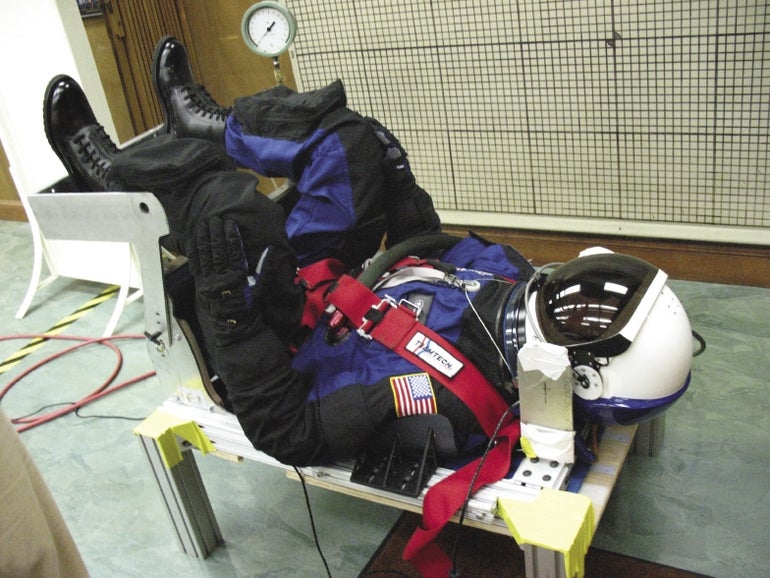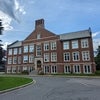In birthplace of modern rocketry, Central Mass. firms play a part in space exploration
Inside a 35,000-square-foot manufacturing plant in Hudson, circuit board connectors that will be launched into space as part of the Orion spacecraft mission are being prepared to withstand otherworldly temperatures and pressures. Just minutes away, in Worcester, space suits are crafted by a company that has been making similar gear for longer than the U.S. space program has been around.
These two companies – Smiths Connectors in Hudson and David Clark Co. in Worcester - are among a select few Central Massachusetts suppliers to NASA that have had a hand in space programs that include the Mars rover Discovery and the International Space Station.
“When you know that there is a piece of hardware on Mars roaming around and collecting data and that you probably touched the connector used on the Mars rover, it is pretty impressive,” said James Demers, product line manager at Smiths, who described the space connection as “the best part” of his job. “It is nice to have a small part in the big picture of space exploration.”
Smiths, formerly Hypertronics, has been a direct supplier and subcontractor to NASA since the 1970s. The company creates electronic connectors and printed circuit boards that have been part of the International Space Station, Hubble Space Telescope, the Space Shuttle and now the Orion spacecraft, whose goal is to take humans to Mars in the 2030s.
The NASA connectors tie together circuit boards with extremely high reliability, which is key when it comes to space applications, Demers said.
“You are talking about billions of dollars in programs, and when you are talking manned space flight, there is a risk of human life as well as that (of a) significant amount of dollars,” he added.
David Clark (DCCI) has been making pressurized safety suits since 1941 when it helped in the effort to win World War II. It recently created a suit that allowed Felix Baumgartner to jump from 23 miles above the Earth's surface at the edge of space into a free fall that exceeded the speed of sound before he landed on Earth.
“What we do is very unique and very personal. The fact (that) we are developing equipment people wear to protect their lives is not something we take lightly. Not only for NASA but for the Air Force,” said Daniel M. Barry, vice president and director of research and development at DCCI. “Virtually everything you see in a David Clark suit is made right here in Worcester.”
A connection that goes back nine decades
Worcester's connection to space began with Robert Goddard, who spawned the age of modern rocketry in the 1920s with many of his experiments taking place in the city, said Vanessa Bumpus, the exhibit coordinator at the Worcester Historical Museum, who has been working on a new exhibit detailing Worcester's involvement in the space race. Goddard's legacy spread to area companies, she said, helping the city transition from a manufacturing hub to an area supporting research and innovation.
“It started here and it's a continuous cycle,” Bumpus said. “Worcester is not going to let Goddard's dream die.”
NASA has 47 direct suppliers and subcontractors in Massachusetts, with a number of subcontractors to larger companies in Central Massachusetts.
Worcester's space connection has helped boost Central Massachusetts' image as a center for technology, Barry said. Being able to show that the work is taking place in Worcester also helps inspire local high school and college students, he added.
The suppliers have been invaluable to NASA's space efforts, according to NASA spokeswoman Rachel Kraft. More than 1,000 companies from 46 states contributed to Orion, helping lead to a successful Dec. 5 test flight, she said. Kraft called the suppliers the “backbone” of NASA's efforts. “They provide a level of expertise, along with manufacturing hardware, software and other elements that are very instrumental in the success of the space program.”
NASA's programs are being joined by private companies such as Orbital Sciences, Space X and Virgin Galactic that are planning commercial space flights and taking on NASA contracts to transport supplies and astronauts to the International Space Station.
“I do feel a groundswell and a re-ignition of enthusiasm for the space market,” Demers said, explaining that NASA had gone through a dormant period.
More opportunities?
Private space-travel companies could create more opportunities for companies to get involved, Barry added. At the height of the Space Shuttle era (1981 to 2011), the U.S. flew a few dozen people a year, but under some plans for commercial flight that could expand exponentially, he said.
“They are talking about flying dozens of people on a daily basis,” Barry said, calling that a “game changer.”
Companies involved in the space program become members of a higher echelon of suppliers, Demers said. Smiths Connectors also provides products to commercial aerospace, defense applications and medicine, such as in MRI machines. When your connectors have survived 20 years in space inside the Hubble telescope, companies can trust how your product will work in their machines, Demers said.
“It lends a high level of credibility to your capabilities and performance. It gives you a certain pedigree,” he said. “I think there (is) a very limited set of prime contractors and subcontractors … in this market and it does set you apart from a myriad of other companies that may be in your respective industries.”











0 Comments